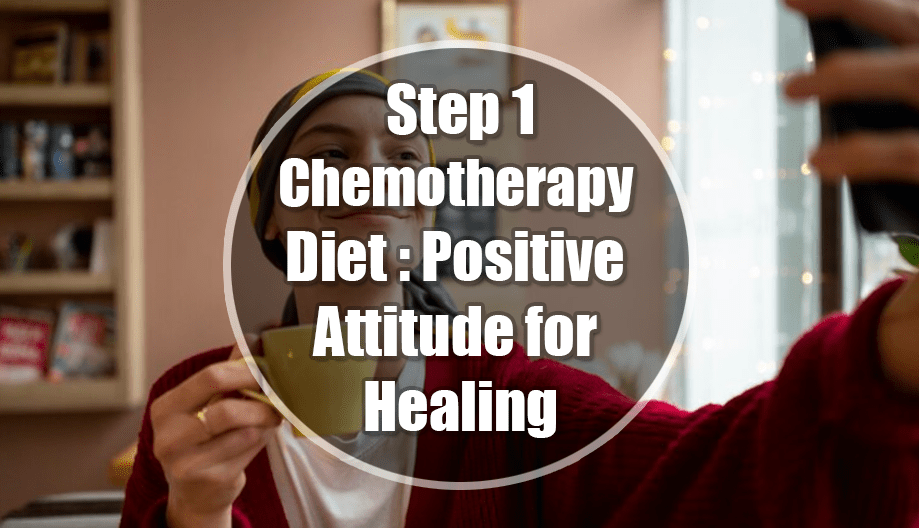This step comes first because an attitude that focuses on vibrant well-being creates the mental and emotional framework for the healing process. Expecting a successful outcome of the chemotherapy experience and what you are adding to it with this program will help to bring about that result. The reverse is also true. Cancer patients who begin a healing journey with fear, anxiety, self-pity, and an expectation of failure will find the road to wellness rocky, slippery, and barely navigable. Focus on loss, in other words, and you are bound to fail; focus on success, and you must surely succeed.
A re-identification is required here from cancer “victim” to cancer “victor”—and the body from diseased organism to healing machine. Welcome to a new way of thinking about your relationship to cancer and chemotherapy! Whereas before, you may have been dwelling on the “why me, why now?” part of being a cancer patient, the time has come to get positive and develop an attitude focused on healing—your healing.

This is the first step on the healing path, no matter how you look at it. Diet, supplements, exercise—anything else you do for yourself to stay healthy during chemo—will be more challenging and seem more scattered without this positive framework for the healing process.
Please engage these practices at the program’s outset and keep them going throughout. Try at least some if you don’t feel up to handling all of the suggestions below. Tremendous benefits can be derived from “getting your head on straight” about who you are (not a victim, but a person on a healing journey) and where you are (precisely in the right place) in the process of getting and staying well.
Use Daily Affirmations
Affirmations are highly effective ways to turn around your thinking and, from there, your behavior. They have been used for centuries in one way or another to support goals and aspirations. Affirmations are statements that you make to yourself about yourself. You say them aloud and keep printed copies of them around (on your computer monitor, for instance) where you can see them and repeat them often during the day.
It’s best to come up with an affirmation or two that you adopt as your own. Avoid using negative words, such as “no” or “not”—it is better to say “| am healthy” than to say “I do not have cancer.”
Here are some suggestions:
- I am healthier with each new day.
- My body heals quickly and easily.
- I am healthy in every cell of my body.
- My body is a healing machine.
And before a nap or bedtime:
- Even when I am asleep, my body is healing itself.
Journal Your Feelings
Emotions are apt to run rampant during cancer treatment. You may find you are happy one minute, depressed the next, on an ever-changing see-saw. Consider keeping a journal of your feelings to bring some balance into the life of the emotions and release negative ones that might be weighing you down. It is as simple as getting a notebook, titling it “My Journal of Feelings,” and writing in it once a day or several times a day, or whenever something comes up that you want to express.
There is no unique way of doing this, except the entries should always start with, “| am feeling….” You may want to make your journal public. To do that, there is no better way than to blog online. Starting and maintaining a blog is not difficult; for some, it is an excellent way to release emotions and share the treatment experience.
Here are some emotions that may surface when you are doing this practice:
- Anger
- Gratitude
- Confusion
- Joy
- Fear
- Resentment
- Forgiveness
- Self-pity
Spruce Up Your Environment
Just because you are in treatment doesn’t mean you must live in an environment that says “professional sick person.” As part of the healing process, I encourage you to spruce up your surroundings, making them bright, airy, clean, and uncluttered.
Your outer world mirrors your inner world. If you are on a journey of healing, the rooms where you spend your time reflect the positive outlook you have adopted.
Certainly! Here’s the formatted list of ideas:
- Ask your caregiver and friends to bring you fresh flowers every few days.
- Ensure your bedroom is spotlessly clean and organized.
- Unclutter your space, even if it means parting with items that have lost meaning.
- Incorporate nature into your surroundings through a small plant, photos of beautiful natural settings, or a water bowl with floating flower blossoms.
Dress Up
This goes hand-in-hand with the previous suggestion but gets more personal. If you spend a lot of time around the house—and close to the bed or couch—there is something about freshening up and dressing up that is positively life-affirming. Try to make time at least twice a week to dress up and go to an art gallery, a mall, a café, a park, or a movie—anywhere people congregate and pass by. This makes us feel more “normal” than sitting at home with a book or the TV.
Dressing up and going people-watching is good for the soul and the body. When you return to home base, you may feel bushed, but you will also feel fulfilled.
Stay Positive
Finally, wrap everything you do and say in a positive frame. Decide not to complain but to be grateful for the good that is unfolding in your healing process. The more you concentrate on the positive aspects of your journey through chemo, the greater chance you have to heal faster and better.
Let “the glass is half-full” (not half-empty) be your mantra.

